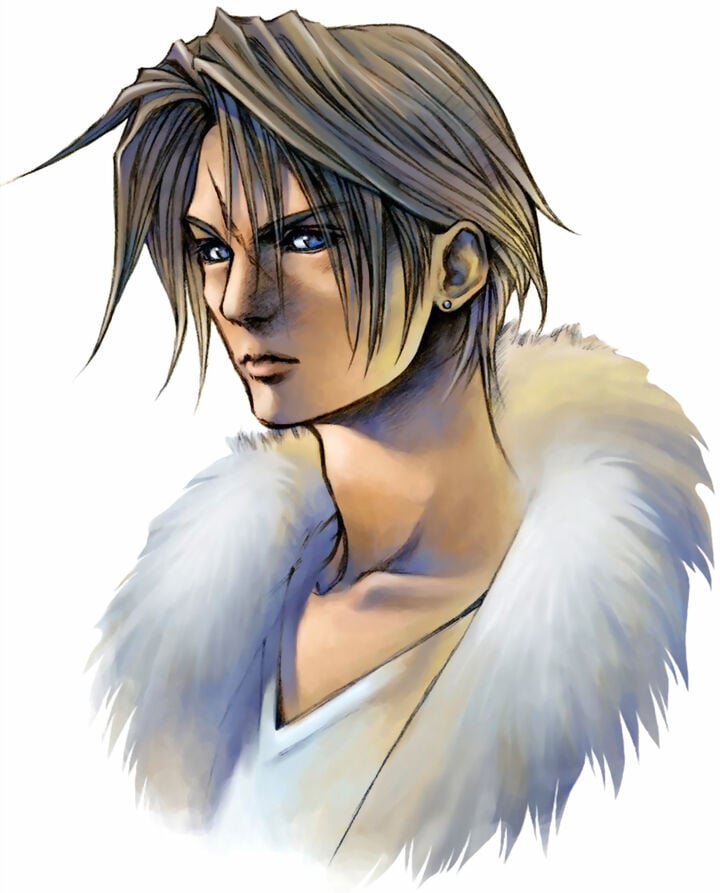Ignoring the lack of updates if the game is buggy, games back then were also more focused on quality and make gamers replay the game with unlockable features based on skills, not money. I can’t count the number of times I played Metal Gear Solid games over and over to unlock new features playing the hardest difficulty and with handicap features, and also to find Easter eggs. Speaking of Easter eggs, you’d lose a number of hours exploring every nook and cranny finding them!
Comparing modern game with games from the olden days is a little bit like comparing a savery steam pump with a modern internal combustion engine. Sure the general principles are identical but the complexity of the system is a manifold of the other.
I really love retro games, i have very fond memories of the C64 and SNES, but i am not a fan of the glorification of those games. Only a small part of the old games are still fun today and lots of them have bugs. Secret of Mana on the SNES for example has a fun bug where leveling all weapons and spells to max can create a overflow error in the final fight of the game, which removes the mana hero completely from the game, rendering the last fight impossible because only the mana hero can damage the mana dragon significantly.
The good thing was that games were complete and they didn‘t try to suck ever last penny out of you post-launch. Also, no updates meant they actually couldn‘t just ship them broken and fix later…
Tekken used to have more than half of the characters HIDDEN. Now they just sell them one by one.
Well the new Tekken games launch with more and more characters, besides 7 which did launch with less than 6, and if you consider that the price of games has gotten cheaper due to inflation since the first Tekken it starts to make sense that they’re trying to make more money off them. Games have been costing more to make while costing less to buy for decades now and the industry is reaching a point where that’s become unsustainable but people just won’t accept a larger sticker price and longer development cycles so studios are finding new ways to make money. Personally I think selling characters as they come out for a few bucks is actually not a bad thing in fighting games, it keeps the games alive and interesting for much longer so long as it’s done well.
But it did mean they would ship them broken with no chance of fixing them, tbf.
That only happened extremely rarely. Nowadays it seems to be almost mandatory, precisely because the mindset is that they can just fix it later
That happened like, 6 times.
I can literally only think of a handful of games that had serious bugs.
There was that ninja turtles game for nes with the impossible jump, there was enter the matrix for PS2/xbox that was completely not done. There were a few games that were poorly conceived in the first place like ET for Atari…
But yeah, what else had serious bugs?
WrestleMania 2000 on N64 had a bug that would randomly delete all saved data.
There was plenty of terrible, buggy games you just didn’t see because stores would drop them. PC had it far worse than console did back in the day. I think it’s also that games are just way fucking cheaper now, adjusted for inflation a SNES game was around 120 bucks and a PS2 game was around 75 bucks.
There isn’t a single game without bugs
Still happens, used to be rare
Fun anecdote. The PAL version of Digimon World 1 had a serious bug that prevented your progress to recruit Ogremon, which you needed to recruit Shellmon, which you needed to recruit a bunch of late game digimons, and made your access to several areas extremely harder. A 100% completion was impossible. It was still such a neat game tho.
Games were definitely buggy and I honestly think people forget how much better the quality is nowadays.
I also think there is something to it just being the 90s or so and not having much choice. If you only have one game to play then of course you’re going to replay it to death. If I have a steam library of 1000 games then I’m much less likely to.
A lot of this is just nostalgia for the past and the environment as opposed to games being any better.
I don’t agree with that first point at all. Games were not all that buggy, It was orders of magnitude better than it is now.
I think it’s because people only remember the good games and not the stinkers.
I played a lot of shit games I can’t recall because I played for 30 minutes max. There was one game I never passed the first level as I couldn’t figure out what to do, I think something to do with jelly beans and a blob. How is that good gameplay lol?
But of course myself and others can tell you about the games we played for hours like Super Mario Bros which didn’t really have bugs and were good.
The difference is back in the day the great games were the highly advertised “big ones” and the “stinkers” usually fell flat. Now you have a mountain of AAA stinkers and have to go scavenging for indie gems.
Not sure that’s right - before the internet I had no clue what was supposedly good or not. I’d rent games from blockbuster and just try them one by one. Lots of shitty games and I had no idea that Mario or sonic or anything was meant to be good.
Now it’s a lot easier just based on metacritic or steam reviews to figure out if something is good or not.
A couple years back I found my old Gameboy advanced. I tried to play Kirby on it and I was taken back by how much it sucked. The screen was way smaller than I remember it being and there was no backlight which meant I had to play the game in a well lit room. I don’t think I could ever go back to those days.
There’s also the SNL effect. Everyone remembers the great games like Mario. Nobody remembers World Games.
I’m unfamiliar with that game. Was World Games buggy or just bad? The quality the OP referred to was bugs, not gameplay.
Even the worst AAA game today has better game play than anything from 30 years ago. It’s the nature of extreme complexity that allowing players freedom makes complete debugging impossible.
Hehe. World Games was an Olympic event type of game for the NES and other systems back in the late 80’s.
It was actually a well reviewed and enjoyed game, so I’m not sure why he decided to use it as an example when there were so many other actually bad games back then. It also caused a “spoof” game to be made on the NES called “Caveman games”, which did a similar game style, but set in caveman times with caveman events. I preferred caveman games as a kid, and still do. Racing against a friend on who can rub sticks together and blow on the smoke to make fire first is still a blast. So is beating the other guy with a caveman club. Good times.
World Games was so good they made a spoof sequel of sorts called caveman games. A lot of people remember world games, it was a well received game. You had so many actually forgettable garbage games to choose from…
I have never heard anyone talk about that game, ever. But I remembered hating it as a kid. But social media wasn’t a thing back then. So I don’t know if it was talked about elsewhere.
If that was a well received game, I guess it speaks volumes about the rest of the NES library.
It’s because it wasn’t really a young kids game. It was aimed at a bit older of a crowd. They made a later version of it called caveman games that was geared more towards kids and it was a lot of fun, with mostly the same game mechanics.
But if he had to go with a forgettable game he wouldn’t have remembered it.
I mean technical wise, games are better now and could easily be patched, but I think that’s why games had better gameplay in the past to make up for the lack of gamer accessibility to patching.
You’re saying that because games couldn’t be patched, they had better gameplay? That makes no sense at all.
Lots of games had crap gameplay. There are more junk vintage games than good ones. The gameplay was simple because it had to be. The consoles didn’t have the power to do more. Chips were expensive. So they had to invent simple gameplay that could fit in 4k of ROM. If dirt simple gameplay is your thing, great. Thr Atari joystick had one stinking button for crying out loud.
You think Space Invaders has better gameplay than Sky Force Reloaded? Or Strider has better gameplay than Hollow Knight? You’re insane.
E.T. for the 2600 had gameplay so bad it crashed the entire video game industry.
Double Dragon on NES had a jump that was impossible to make forcing the company to make a new cart and give refunds.
There are more junk vintage games than good ones.
Anyone who has iterated though a full romset will agree with this.
Just like movies, music, books, etc. the classics are fondly remembered gems and the rest are easily forgotten.
Double Dragon on NES had a jump that was impossible to make forcing the company to make a new cart and give refunds.
I didn’t know this. This is obviously why I never finished that game and certainly not because I suck at it.
I might be misremembering what game it was. I was just a kid when I learned about it. I can’t seem to find anything about it other than an impossible jump in the PC port of TMNT.
deleted by creator
some games would be unplayable without hand-patching the code that you’d find in a magazine.
They weren’t as buggy. People making excuses classify exploits as bugs ignoring that modern games have more bugs and exploits.
I played Atari 2600 games like space invaders, adventure, and pitfall for thousands of hours without ever running into a bug. The only game with an exploit was Combat where you could put your tank muzzle into a corner and make it loop across the map. But both players could do it.
Yeah quality has improved massively, maybe not the initial release but 90% of games i recently played were regarded as buggy messes on release. After years of updates they mostly work.
Nah, in the 80s we had hundreds probably thousands of games for the commodore 64 and later the amiga 500, all of them pirated. The piracy scene was huge, and often the games were free as we just copied them from friends
I have 1000 games, but I still replay a bunch of them over and over, just at a less rapid pace.
I’ve grown up with a PS1 and a handful of pc games, and I don’t remember any of them being any more bugged than modern gaming. The only exception being Digimon World 1, a notoriously buggy game (but to be fair, half of those bugs were introduced by the inept translation’s team).
I know people nowadays know and use a bunch of glitches for speedruns and challenge runs (out-of-bounds glitches being the norm for such runs), but rarely, if ever, those glitches could be accessed by playing through the game normally, to the point that I don’t remember finding any game breaking bug in any of the games I played in my infancy (barring the aforementioned Digimon World).
Reading my Diablo 2 and WarCraft 2 manuals on the toilet were some of the highlights of my childhood
Dude I remember reading the original X-Com manual like it was a novel.
They didn’t need updates because they gave you the whole game, (usually) more-or-less bug-free, the first time!
Counterpoint: budget re-releases of games (e.g. ‘Platinum’ on PlayStation) were often an opportunity to fix bugs, or sometimes even add new features. A few examples:
- Space Invaders 1500 was a re-release of Space Invaders 2000, with a few new game modes.
- Spyro: Year of the Dragon’s ‘Greatest Hits’ release added a bunch of music that was missing in the original release.
- Ridge Racer Type 4 came with a disc containing an updated version of the first Ridge Racer, which ran at 60fps.
- Super Mario 64’s ‘Shindou Edition’ added rumble pak support, as well as fixing a whole bunch of bugs (famously, the backwards long jump).
Those are just off the top of my head. I’m certain there are more re-releases that represent the true ‘final’ version of a game.
That’s the exception rather than the rule. If you have the opportunity to make some changes in a new batch, why not take it?
Generally, when the game was released, it had to be done. If there were any major bugs, then people would be returning their copies and probably not buying an updated release. It’d also hurt the reputation of the developer, the publisher, and even the console’s company if it was too prevalent of a problem.
I don’t think anybody I knew ever got an update to a console game without just happening to buy v1.2 or something. There were updated rereleases, but aside from PC gaming, I don’t think most console gamers back then ever thought “I hope they fix this bug with an update”.
That’s some survivorship bias shit right here. I can’t tell you how many shitty, buggy games I played in the days of early console and PC gaming. Even games that were revolutionary and objectively good games sometimes had game-breaking bugs, but often it was harder to find them without the internet.
Plus, don’t you remember expansion packs? That was the original form of DLC.
THANK you. Fuck the upvotes, that person is objectively wrong. Maybe they just didn’t play that many games during the early PC/console era?
There are different kind of DLC, and the kind that’s similar to actual expansion packs is usually not criticized (or not by most).
Yeah, if a DLC isnt just content taken out of the main game (in a way that makes the main game worse) and is reasonably priced for the amount of content it contains, then it is a good way for developers to get paid for continuing development of a game after launch when it was already finished at launch.
The Witcher 3 DLCs for example were pretty good.
Expansion packs were more complete experience than DLCs sold piece by piece.
I don’t see how the amount of “completeness” can even be measured. Is it really so much worse that you can buy extra fighters for the Street Fighter 6 that you already own rather than buying Super, Turbo, and then Super Turbo at full price every time? Or that you can choose to buy just the stuff you want for Cities: Skylines for half the price instead of paying twice as much to get stuff that don’t care about along with it? Plus, expansions like Phantom Liberty and Shadow of the Erdtree are bigger than most entire video games from the 90s.
Console:
Except for when they did not, which was actually somewhat common.
But it also became quickly known, respectively stores stopped stocking buggy games. So in return, larger publishers tried their utmost to ensure that games could not have bigger bugs remaining on launch (Nintendo Seal of Excellence for example was one such certification).
But make no mistake, tons of games you fondly remember from your childhood were bugged to hell and back. You just didn’t notice, and the bigger CTDs and stuff did not exist as much, yes.
PC:
It was just flat-out worse back then. But we also thought about it the reverse way: It wasn’t “Oh this doesn’t work on my specific configuration, wtf?!” but “Oh damn I forgot I need a specific VESA card for this, not just any. Gonna take this to my friend who has that card to play it.”.
Even the concept of taking your game to a friend to play it is basically impossible today
A few days ago, I found out that one of the first games I ever owned, The Broken Land, was abandonware. I knew that it was generally considered a bad Diablo knock-off, but I had it remembered as at least the items and enemies being ‘meaningful’ in ways I don’t see it today anymore.
Lots of games just look formulaic and predictable to me now. Like, there’s a small and a medium potion, yeah alright game, I’m slowly getting too large of a health pool for you to not give me the big potions.
Well, I looked a little closer at the screenshots, and yeah, fuck me, the game doesn’t even try to hide its formulaicness. Health potions are literally just PNGs with a number attached, in variants, small, medium, big. There’s like 10 different PNGs of armor. And you’ll frequently have just one or two enemy types copy-pasted all over an area.
I guess, that is why people call it a bad Diablo knock-off. But having been a kid without expectations when I played it, that had me remember specifically that part as comparatively good, when it was objectively pretty bad…
When I was a kid, some piece of computer hardware came with some game demos. There was one called Taskmaker. It was not good graphically, but I really enjoyed it. It allowed access to three areas, I think. I played so much that I was able to beef up my character significantly. I was eventually given the full game. I played it so much. I tried bribing all of the NPCs to see what they’d say/do. There was a text box where you could type spells into. The normal progression of the game didn’t really give you many of them, but bestowing stuff to NPCs was one way to learn some.
Anyway, I found an abandonware version of it a while back and installed it on an old Mac virtual desktop. It still holds much of the same magic for me. I don’t have time to bribe every NPCs now, but I remember a lot, and google helps me with the rest.
Games back then were also typically made by two dudes: one programmer and one artist. Heck, the original doom was made by five dudes: two programmers, two artists and one designer. I wonder what kind of nes games could be made back then if they had AAA budget like modern games.
two programmers, two artists and one designer
One of those programmers was John Carmack, who happens to be ridiculously talented, and actually revolutionized PC gaming multiple times throughout his career.
games back then were also more focused on quality
This is selection bias. You remember Metal Gear Solid, but do you remember Iron & Blood: Warriors of Ravenloft? Do you remember Mortal Kombat Mythologies: Sub-Zero? Bubsy 3D? The million-and-one licensed games that were churned out like baseball cards back then?
and make gamers replay the game with unlockable features based on skills, not money
If we’re going to say that a full-price game today costs $70, Metal Gear Solid would have cost the equivalent of $95. Not only that, but that was very much the Blockbuster and strategy guide era. Games would often have one of their best levels up front so that you can see what makes the game good, but then level 2 or 3 would hit a huge difficulty spike…just enough to make you have to rent the game multiple times or to cave in and buy it when you couldn’t beat it in a weekend. Or you’d have something like Final Fantasy VII, which I just finished for the first time recently, and let me tell you: games that big were designed to sell strategy guides (or hint hotlines) as a revenue stream. There would be some esoteric riddle, or some obscure corner of the map that need to happen upon in order to progress the game forward. The business model always, at every step of the medium’s history, affects the game design.
“Value” is going to be a very subjective thing, but for better or worse, the equivalent game today is far more packed full of “stuff” to do, even when you discount the ones that get there just by adding grinding. There are things I miss about the old days too, but try to keep it in perspective.**
“Value” is going to be a very subjective thing, but for better or worse, the equivalent game today is far more packed full of “stuff” to do, even when you discount the ones that get there just by adding grinding. There are things I miss about the old days too, but try to keep it in perspective.
Exactly this.
Games back then were pricier - once you account for inflation.
Games back then did expect you to pay extra - in fact quite a few were deliberately designed to have unsolvable moments without either having the official strategy guide or at least a friend who had it who could tell you.Games back then were pricier - once you account for inflation.
This has always been a weird argument to me. Did wages go up to match inflation? If not, they’re not actually getting any cheaper.
The median US household income in 1998 was $38.9k, and today it’s $77.3k.
Games back then were pricier - once you account for inflation.
That’s commonly said but ignores other economic factors such as income, unspent money, and cost-of-living.
Though lots of things are better now: the entire back-catalogue of games, more access to review/forums, free games (and also ability to create your own games without doing so from nothing) etc. Aside from when video store rental was applicable, early gaming was more take-what-you-can-get (niche hardware/platforms might still have that feel somewhat).
That’s commonly said but ignores other economic factors such as income, unspent money, and cost-of-living.
Inflation is derived by indexing all of those things. Some things are far more expensive or far cheaper relative to each other, but we approximate the buying power of a dollar by looking at all of it.
a few were deliberately designed to have unsolvable moments without either having the official strategy guide or at least a friend who had it who could tell you.
Do you have an example?
I knew kids that bought strategy guides, I worked at a game shop that sold strategy guides, and as far as I could tell they were for chumps. People who has more money than creativity.
Cosmetic DLC feels like it’s for chumps too, but it’s lucrative. The best example is going to be Simon’s Quest, without a doubt. The strategy guide was in an issue of Nintendo Power. I’m sure they were also happy to let social pressures on the playground either sell the strategy guides or the game just by word of mouth as kids discussed how to progress in the game. A Link to the Past is full of this stuff too. The game grinds to a halt at several points until you happen to find a macguffin that the game doesn’t even tell you that you need. Without the strategy guide, you could end up finding those things by spending tons of hours exploring every corner of the map, but by today’s standards, we’d call that padding.
Son, are you crying?
There’s just so much everything now a days. There’s tons of great new music and tons of great new games buried in all the new stuff thats being pumped out that it’s hard to find the gems. There’s lots of passionate people out there taking the time and effort to try and make the best
I forgot about hint hotlines. They’d charge per minute and did everything they could to keep you on the phone. I called a hotline once and my parents weren’t too happy about it.
That was a large part of the charm for me in Tunic. The core mechanic was collecting pages of the instruction booklet as you adventured so you could learn the mechanics of the game. The other part of that being the manual was written in an unknown language* and you’d need to infer what the instructions meant using context clues. It was an absolute blast and hit the dopamine button when I figured out some puzzles.
*Btw, if you know, you know
Oh man, I was coming in here to recommend the same. I’d say to look up nearly nothing about it in order to enjoy the mystery the best.
Sometimes you’d beat a boss, get a manual page from it, and it’s like “oh I could’ve done this the whole time, holy crap”
For any of the Outer Wilds or Obra Dinn fans, play tunic for the mystery. For the ALTTP fans, play it for the combat!
playclassic.games is a website
My games never came with a manual. Maybe because we swapped them in school shamelessly. Not needing to be online was a great bone because it made copying so much easier.
Some games really needed manuals to play. That’s what text files were for.
I would have appreciated a more robust modding community for NES, etc.
deleted by creator
The game was about the game. Get off my lawn.
Yeah. I mean there was shitty stuff back then, of course.
Arcade games, games designed to not be beatable without their guides (it’s why moon logic is a concept in the first place), that kind of stuff. But it’s a whole different level nowadays.












